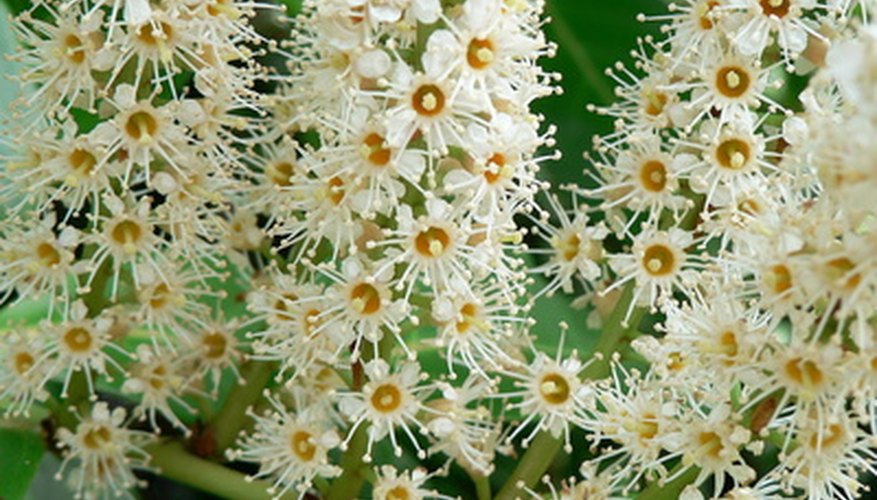Laurel is an easy-to-maintain shrub or tree often used in borders and hedges. The cherry laurel, also known as English laurel, is one of the most popular hedge plants. It is often used as the classic hedge found in formal gardens and can grow up to 30 feet tall without pruning. Cherry laurel grows flowers and produces fruit that is called a drupe.
What's in a Name?
True laurel (Laurus nobilis) doesn't develop a fruit. English laurel is not truly a laurel; it is part of the Rosaceae family and Prunus genus. Other members of the Prunus genus include plums, apricots, almonds, peaches, nectarines and cherries. The English laurel is named so because the leaves resemble the true laurel. English laurel is simply called common laurel in the U.K. It is not related to the bay laurel used in cooking.
- True laurel (Laurus nobilis) doesn't develop a fruit.
- English laurel is simply called common laurel in the U.K.
- It is not related to the bay laurel used in cooking.
The Fruit
English laurel produces a fruit after the flowers are finished blooming in fall. It is a drupe or cluster of fruits that resemble cherries. The fruit is edible but doesn't taste very good. Birds and wildlife enjoy the drupes. The drupes are 1/2 inch wide and start out green, ripening to a blackish purple. The fruit is shaped like an olive with a point at the terminal end. The cherry laurel fruit stains pavement and other surfaces.
- English laurel produces a fruit after the flowers are finished blooming in fall.
Locations
English laurel is native to southeastern Europe and parts of Asia. It was introduced to England by Turkish travellers in the 17th century and has been a favourite plant ever since. It prefers slightly acidic soil in a well-drained site. English laurel can tolerate partial shade but flowers and fruits best in full sun. Cherry laurel is hardy in United States Department of Agriculture zones 6 to 9. The dark green foliage is salt tolerant and can be planted in coastal areas.
- English laurel is native to southeastern Europe and parts of Asia.
- English laurel can tolerate partial shade but flowers and fruits best in full sun.
Hedging
English laurel is remarkably unfussy. It has medium water needs and requires shearing or pruning to keep it in shape. Pruning should be done after the flowers have finished blooming. The cherry laurel is considered a fast-growing plant and will require pruning at least once if not twice per year. It is best to trim individual branches rather than shearing as this mutilates the leaves. For overgrown hedges that need rejuvenation pruning, only take 1/3 of the height off per season.
- English laurel is remarkably unfussy.
- The cherry laurel is considered a fast-growing plant and will require pruning at least once if not twice per year.
